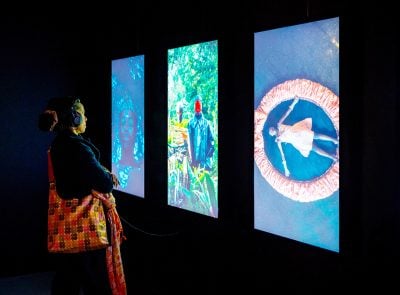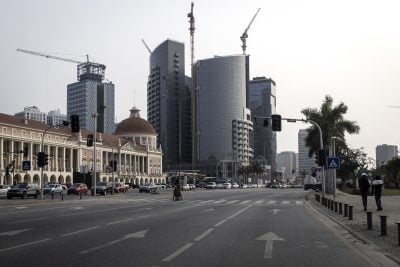Although it is relatively small in global terms, Africa’s pharmaceutical industry in the fastest growing in the world. Given a population of close to a billion people and the prevalence of a host of illnesses and diseases, the demand for pharmaceutical products far outstrips the supply, including imports. The demand will continue to increase as more Africans move to urban centres. In this Special Focus, Sherelle Jacobs reports on the current state of the industry in Africa, profiles some of the major companies involved and looks at future developments.
Gustav Ando, director of the global information firm, IHS puts Africa’s pharmaceutical industry in perspective. “Despite the large population,” he says, “the African market is a fraction of the size of developed markets and even several emerging markets – so even if it is a very fast-growing market, it still only plays a very marginal role for most global pharmaceutical companies, particularly those involved in new drug development.”
Indeed sub-Saharan Africa represents a paltry 0.6% (worth $3.8bn) of the world pharmaceutical market, according to 2007 estimates by the International Financial Corporation (IFC). According to Gustav, underdeveloped infrastructure is the main reason for the sector’s poor showing in the African region. “It is a familiar story of infrastructure development: what is the point of launching drugs in a market if there is no system in place for distribution?” he asks.
Nonetheless, and despite infrastructural shortcomings, the pharmaceuticals sector in Africa is growing fast in a diverse range of fields. In the last five years, the market is estimated to have grown to $10bn, according to the research firm Frost & Sullivan.
“There is fairly good coverage of essential drugs at the moment – e.g. antibiotics, antivirals [to treat HIV/AIDS] and so on,” says Gustav. However, he points out that medication to treat illnesses such as epilepsy, diabetes, cardiovascular problems and cancer is thin on the ground.
Access to pharmaceutical products also varies widely over the continent’s 54 countries – with the best coverage in Southern and Northern Africa with West and East Africa slotting in behind the two. The South African pharmaceutical industry, for example, is set to double over the next six years, from around $3.8bn in 2011 to $7bn in 2018, (at 9.2% compound annual growth rate) according to a report by GBI Research.
In Nigeria, growth is also positive, with pharmaceuticals expenditure projected to grow from N143.65bn ($921m) in 2011 to N167.28bn ($1.05bn) in 2012, according to Business Monitor International’s (BMI) report on the country’s healthcare and pharmaceuticals industry for the third quarter of 2012. That constitutes a 14.4% growth in US dollar terms. Moreover, the pharmaceuticals manufacturing sector in Nigeria has grown at an average of 10 to 15% per year since 2001, according to the World Bank’s IFC.
Positive growth is not only confined to regional leaders Nigeria and South Africa, however. Pharmaceutical firms are also setting up shop in other countries across the region, particularly Kenya, Ghana and, to a lesser extent, Southern African countries like Zambia, Zimbabwe and Botswana.
In Ghana, pharmaceuticals expenditure, based on second quarter data, rose from C469m ($303m) in 2011 to C548m ($343m) in 2012, an increase of 13.3%, according to BMI. And in Kenya, expenditure increased by more than 5%, based on Q1 data.
Dismantling production barriers
There is encouraging evidence that governments in African countries are aware of the potential of the pharmaceutical industry, and are endeavouring to implement national policies to encourage growth.
In South Africa, the pharmaceutical industry is integral to the government’s Industrial Policy Action Plan. The state has identified domestic manufacturing of pharmaceutical products, which are in strong demand, as a key priority. These products include ARV drugs used for treating HIV/AIDS (South Africa is the world’s biggest market for ARVs). The government is also keen to improve production of various vaccines and biological medicines.
The South African state has committed itself to dismantling regulatory barriers currently constricting the clinical research market. It believes that, in doing so, it could help to more than double the value of the field. Furthermore, South Africa has plans to set up a new regulatory body, the South African Health Products Regulatory Authority, to streamline drug registration procedures.
Governments in other African countries are taking similar measures. In 2006, the Nigerian Federal Executive Council passed a resolution to support locally manufactured products, including in the pharmaceutical sector, in recognition of the overlooked opportunities to meet local demands for medicines through domestic production.
The Kenyan government has also explicitly expressed its desire to make the country a regional hub for pharmaceutical innovation, with the national health research institute playing a key role. As part of its new pharmaceutical policy, the government has committed to improving the institutional and regulatory architecture of research institutions. In Ghana, policy makers created the National Health Policy in 2005, focusing, amongst other areas, on monitoring, medicine procurement, regulation, distribution, and research. Nonetheless, the pharmaceuticals industry in Africa still has a long way to go. Firstly, it is important to highlight the fact that the sector’s growth is geographically patchy.
“The potential is highly significant, but also very variable – some countries are more ready for expansion then others, primarily depending on how much government investment there has been in healthcare infrastructure on the one hand, and healthcare insurance on the other. There also needs to be significant improvement in intellectual property standards – there is remarkable inconsistency here in most markets,” says Gustav of IHS.
Despite pledges such as those from the Nigerian government on more domestic production, local output of medicines remains limited. For example, around 80% of ARVs are imported into Africa. The main supplier of such drugs to the continent is India. There are multiple reasons for this lack of local manufacturing. It is partly due to the scarcity of crucial raw materials needed to manufacture medicines in Africa and also because the specialised machinery needed is expensive to purchase and maintain and spare parts are often difficult to source on the continent.
Due to the relatively small pool of sufficiently skilled workers in the field, companies also often struggle to recruit trained staff. The sector desperately needs more personnel with very specialised skills, not only in pharmacy but also chemistry, engineering and ICT, amongst other subjects, according to the African Development Bank. All this ultimately means that many Africa-based manufacturing firms struggle to meet international quality standards.
Curse of counterfeits
But counterfeit drugs constitute probably the single biggest challenge to the pharmaceutical industry in Africa. Such drugs are defined by the World Health Organisation as “deliberately fraudulently mislabelled with respect to identity and source”. It is believed that more than half of the drugs sold in Africa are fake.
Over a third of anti-malaria drugs in sub-Saharan Africa that have been tested over the last 10 years have been identified as either counterfeit or of poor quality, according to a survey by the US-based Fogarty International Centre. Apart from malaria-fighting drugs, ARVs and drugs treating tuberculosis are the most commonly counterfeited medicines.
One of the major reasons why counterfeit drugs are flourishing in Africa is cost. In the absence of adequate national health care provisions, the burden of the cost of drugs too often falls on the patient, who then may feel tempted to seek cheaper alternatives being sold by unlicensed street vendors.
In addition, general awareness of counterfeit products is worryingly low in many African countries. In a recent Gallup survey, although 70% of adults said they were aware of counterfeit drugs and the potentially fatal consequences of taking them, awareness was recorded to be as low as 25% in South Africa.
However, firms are starting to come up with innovative new ideas to combat the problem. For example, Bharti Airtel and the American tech company Sproxil have recently partnered to create a quick, easy way for Africans with mobile phones to verify the authenticity of drugs – customers remove a scratch-off label and can then send the code underneath to Sproxil via SMS to verify that the product is genuine.
While the system is invaluable for those who know how to deploy it, “building relationships with individual telecom companies and acquiring the short codes necessary for our MPA solution in each country can take a considerable amount of time – it slows down deployment,” says Dr Ashifi Gogo, Sproxil CEO, in a blog comment published online by Sproxil.
The solution, as outlined by Gogo, is that “by working with Airtel, we can get short codes in various countries’ different markets from just one company, streamlining the process and ‘turbo charging’ our expansion throughout the region. For the consumers it’s win-win – two advanced technologies working together: Airtel’s network provides high-quality, very affordable telecom service enabling consumers to take advantage of Sproxil’s brand protection solution, at no cost to them.”
Want to continue reading? Subscribe today.
You've read all your free articles for this month! Subscribe now to enjoy full access to our content.
Digital Monthly
£8.00 / month
Receive full unlimited access to our articles, opinions, podcasts and more.
Digital Yearly
£70.00 / year
Our best value offer - save £26 and gain access to all of our digital content for an entire year!
 Sign in with Google
Sign in with Google 


